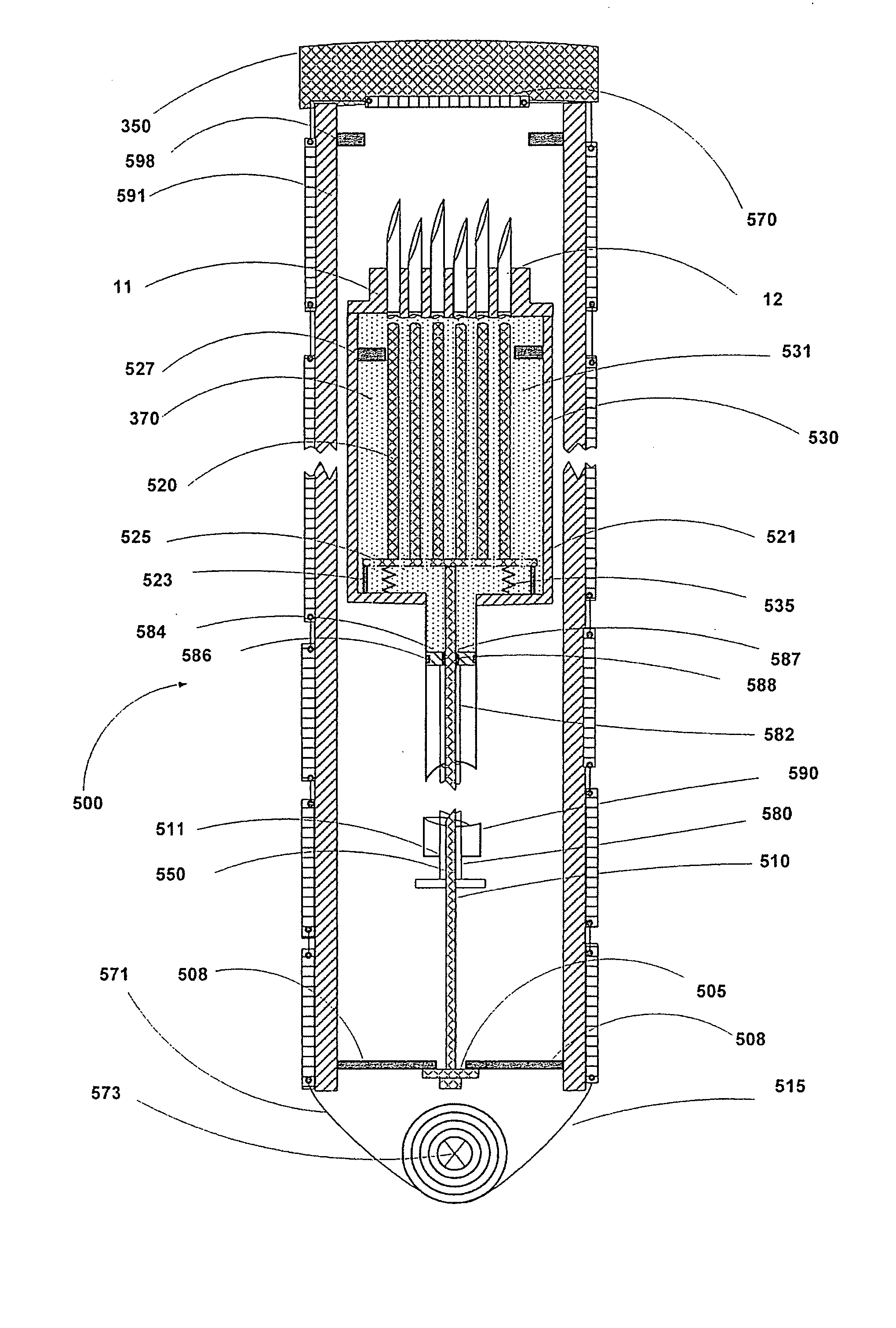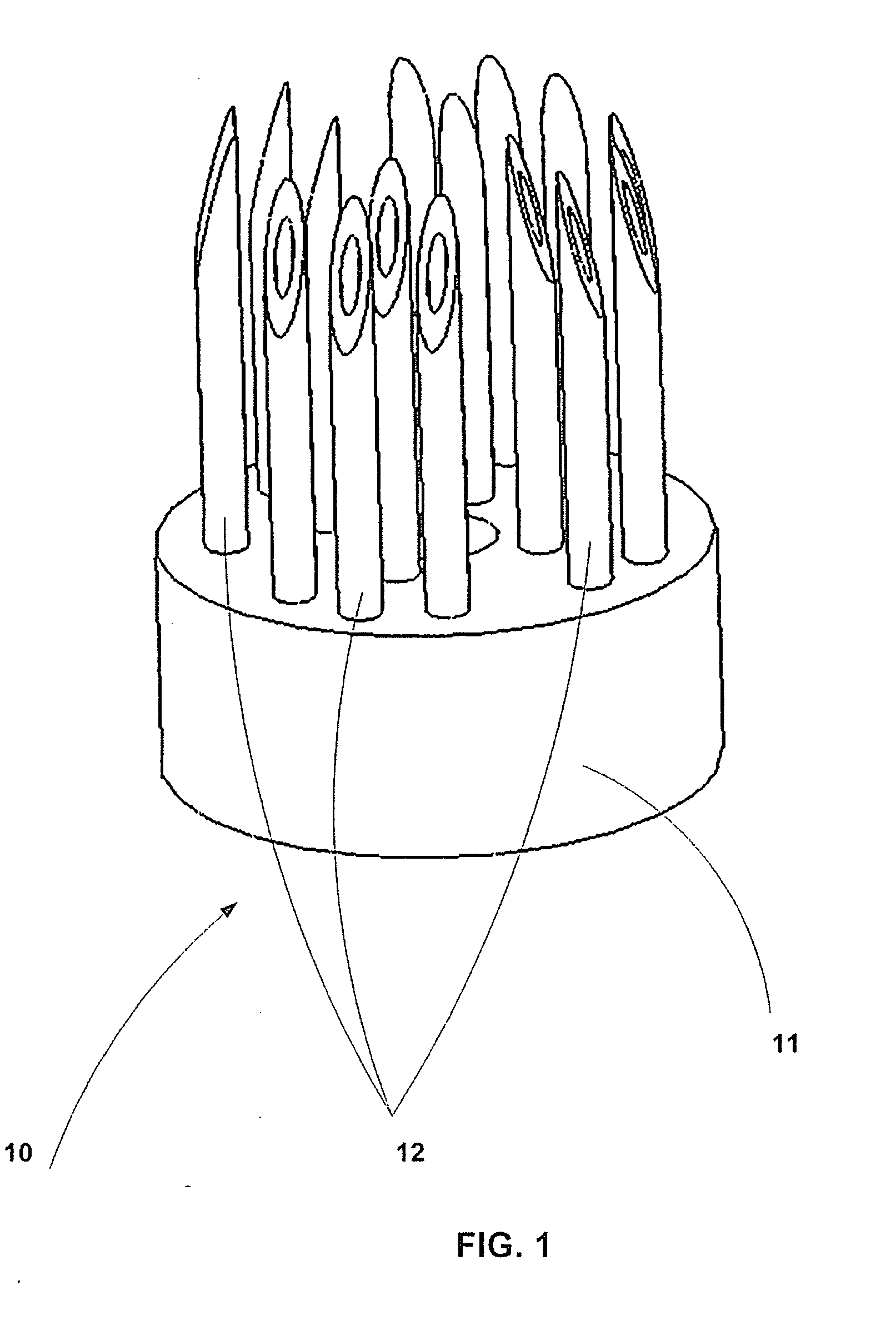Method, system and device for delivering a substance to tissue
a tissue and substance technology, applied in the field of tissue delivery methods, systems and devices, can solve the problems of inefficient drug delivery methods, poor safety, and inability to penetrate too deep,
- Summary
- Abstract
- Description
- Claims
- Application Information
AI Technical Summary
Problems solved by technology
Method used
Image
Examples
Embodiment Construction
[0036] Devices, systems and methods of embodiments of the present invention provide for the delivery of solutions, emulsions, solids or suspensions into organs or tissue. The delivery may be performed through an intervening epithelium (or through any other intervening tissue layer) or directly into a tissue to be treated by using mechanical injection system to inject treating material(s), solution(s), suspension(s), emulsions, solids and the like, such that it may penetrate the tissue or organ to be treated, to a desired and effective penetration depth and at desired concentration.
[0037] The present invention may be used for delivery, into a tissue or an organ, of therapeutic or diagnostic agents in solution, emulsion or suspension form, including but not limited to, genes, proteins, drugs, pharmaceutical compositions, chemical compounds or drugs and mixtures thereof, natural and / or synthetic compounds (in an encapsulated or non-encapsulated form) or any other particulate form of u...
PUM
 Login to View More
Login to View More Abstract
Description
Claims
Application Information
 Login to View More
Login to View More - R&D
- Intellectual Property
- Life Sciences
- Materials
- Tech Scout
- Unparalleled Data Quality
- Higher Quality Content
- 60% Fewer Hallucinations
Browse by: Latest US Patents, China's latest patents, Technical Efficacy Thesaurus, Application Domain, Technology Topic, Popular Technical Reports.
© 2025 PatSnap. All rights reserved.Legal|Privacy policy|Modern Slavery Act Transparency Statement|Sitemap|About US| Contact US: help@patsnap.com



